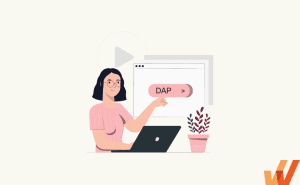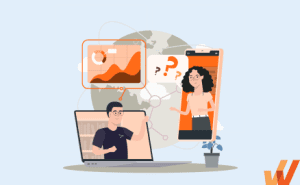
CEO & Co-founder at Whatfix
2024 is the year of AI.
ChatGPT’s launch became the fastest adopted new technology in history, hitting 1M users in 5 days – the quickest application to reach 1M users. Within two months of launch, it surpassed 100M users, hitting 13M daily active users.

And AI technology – powered by large language models like ChatGPT and others – is already being leveraged by the premiere software companies to re-imagine work itself.
But this presents challenges and questions – with questions like:
- “how will our enterprise integrate AI into our workforce technology & tools?”
- “how do we use AI ethically in the workplace?”
- “how do we know AI will be accurate?”
- “how does our organization’s data privacy stay protected?”
- “will my job be replaced by AI entirely?”
At Whatfix, our engineering and R&D teams are committed to enabling technology users to realize their potential through the power of software fully. We aim to make software users more productive through more contextual, supportive application experiences tailored to organizations, departments, and individual end-users.
Today, we’re excited to announce our AI-powered digital adoption platform and share details on our upcoming product release roadmap, why we’re investing in AI, how we’ve identified AI-powered capabilities, and why Whatfix is uniquely positioned to provide next-generation, augmented human-computer interaction capabilities.
We believe in ethical AI.
That includes taking a “pro-human” approach to AI. The idea is that AI will not replace humans in the workforce but will empower us to be more productive than ever before.
It also means taking a “human-in-the-middle” approach to shape our AI use cases to avoid potential misuse and biases.
Our goal is to upskill end-users and employees on how to find complete ROI and harness the power of technology, digital processes, and the digital workplace.
Whatfix AI + Data Privacy Concerns
Data privacy is one of the foundational elements of how we’re building and training our AI model. Enterprise and user privacy will be managed by creating deep data-protection moats at a customer or partner level. Whatfix’s AI will access customer data across only their knowledge bases, applications, and other data sources, not branch out to other companies’ AI models.
How Whatfix Is Harnessing AI Today
Our R&D team has already been hard at work creating and testing AI-powered capabilities inside Whatfix’s digital adoption platform. All of our AI features are tested with our customers in beta launches to understand their contextual needs, empowering our team to create helpful AI capabilities with real benefits and value to our customers.
Whatfix has leveraged the power of an open-source LLM, paired with our vast data warehouse of application documentation and flows, to build a generative AI designed to empower software users to be more productive through auto-complete, elaborate, and summarize text features. This text-elaboration feature will enable both application end-users, as well as digital enablement professionals building in-app guidance experiences with Whatfix co-pilot.
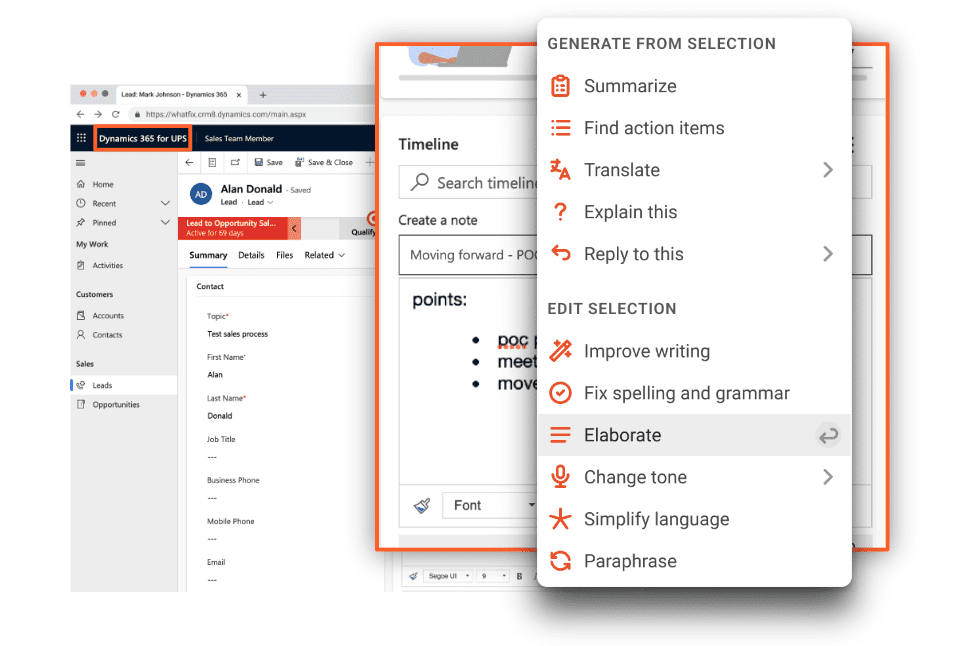
Above: Whatfix text-elaboration features for application application end-users, which appears inside any end-user application like Microsoft Dynamics 365 in the example above.
Below: Auto-complete text features for in-app content creators tasked with improving user adoption inside Whatfix. This AI feature will be trained using an open-source LLM, and fined tuned specifically with individual customer’s documentation, processes, and in-app guidance to contextualize these flows other each customers’ own processes.
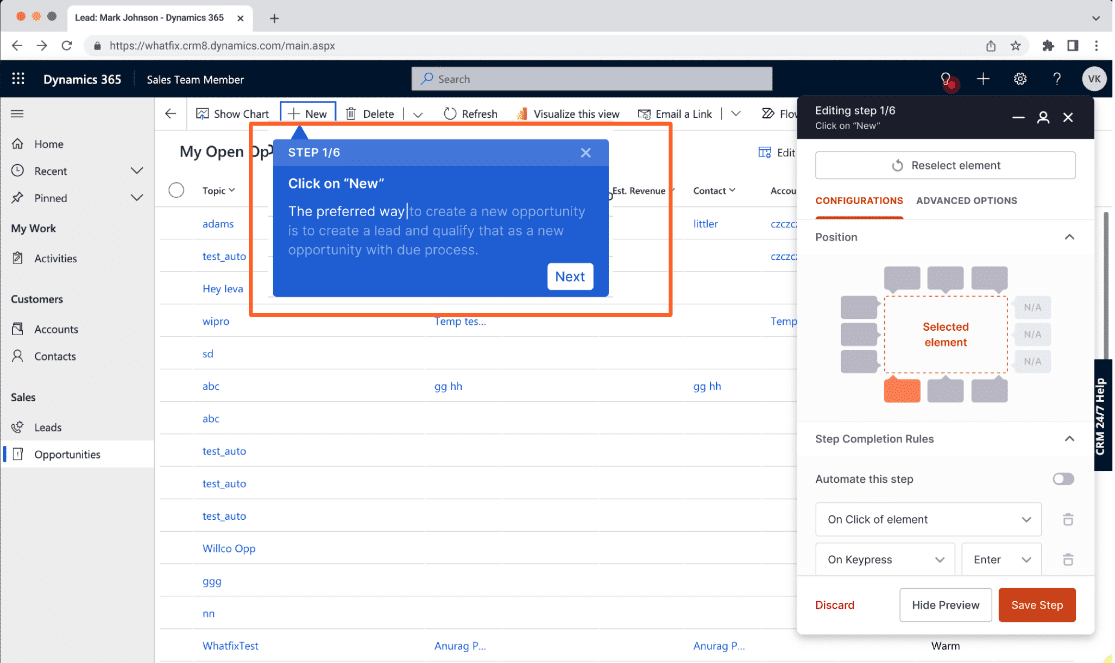
This AI-enabled technology can be brought into any SaaS, desktop, or mobile application, as well as for customer-facing applications or internal, employee-facing software.
Whatfix is uniquely positioned to support enterprises in their digital adoption and end-user productivity journeys, as our AI-powered DAP will have a layer of fine-tuning.
First, our AI is built on an open-source LLM. Then, we fine-tune this AI model with customer-specific information, allowing our AI’s predictions, recommendations, and outputs to be highly personalized and contextual.
Finally, we use a “human-in-the-middle” approach to have internal IT, and L&D leaders act as a final tuning layer to add contextuality to specific partners’ AI models and act as a safeguard against biases and factually incorrect AI hallucinations and outputs.
Whatfix also is planning a June beta launch of our Self-Help summarization feature. Previously, organizations connected a Self-Help overlay onto their digital workplace linked to knowledge base articles, third-party links, and other forms of documentation.
With new AI enhancements, Whatfix can summarize these pieces of information accompanied by citation links. This reduces the time to search and find relevant, contextual help information. Further, our “human-in-the-middle” approach infuses contextual feedback and inputs from specific customers into their AI models that help craft the most personalized, effective AI Self-Help.
This will have implications far beyond simple auto-complete and summarization and is already being developed into a content co-pilot feature, which provides content authors with an AI assistant that helps build in-app flows and guidance, as well as chatbot connected to all enterprise documentation that end-users can interact with as if it was another human.
Adam Shapiro
Manager, Digital Solutions at Cardinal Health
Whatfix’s Future AI-Powered Roadmap
We’re not stopping there. Whatfix is re-imagining the entire future of DAP, and what digital adoption as a concept means.
Whatfix is leveraging AI to help organizations adopt technology seamlessly. With the auto-complete and image recognition features, Whatfix is making it easier for businesses to train their workforce on new applications without any engineering effort. But Whatfix understands that AI must be used responsibly. That’s why they have a “human in the middle” approach, ensuring that the human touch is always present in the adoption process.
One exciting feature we’re working on is an AI-powered model that will be able to complete entire tasks or processes based on simple language instructions, without any reliance on the underlying technology. End-users will be able to interact with a chatbot-like window that overlays onto any application, and in simple terms, tell it exactly what to do.
For example, instead of creating a lead in Microsoft Dynamics yourself, an end-user could simply ask the overlay chatbot to create a lead based on the criteria and information that is typed into the box.
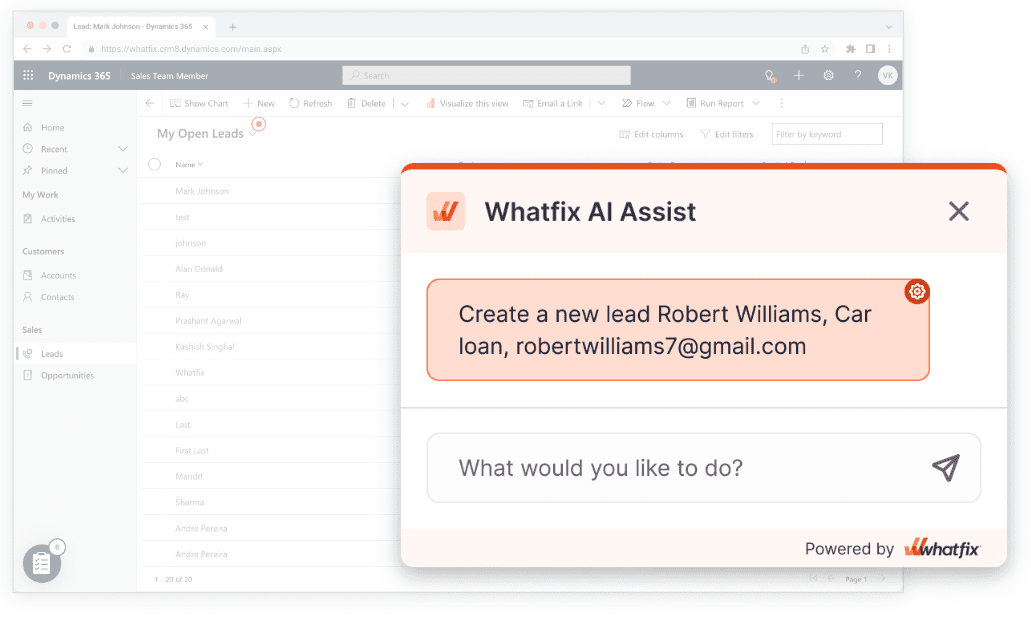
Our engineering team is also working closely with our customers and partners to determine other challenges that can be solved with AI, such as creating better application experiences (for employees and customers), supporting the digital workplace, integrating more process automation, improving compliance, and more – and we hope to have more AI-powered capabilities to be announced and launched for beta testing throughout this year.
Why Whatfix Is Uniquely Positioned in the AI Landscape
As previously mentioned, Whatfix is uniquely positioned to launch impactful AI-powered capabilities that will revolutionize the digital workplace with process automation, human-computer interactions, intuitive end-user experiences, and more.
Organizations increasingly rely on more software to maintain operations as the SaaS landscape evolves. The average employee uses 13 different software applications 30 times a day.
Whatfix actively understands and overlays over 750 applications, with 88,000+ pieces of knowledge documentation, and over 250M unique monthly page views on these applications. This data is used to train our personalized AI models.
Privacy will be managed by creating deep data-protection moats at a customer level. AI will access data for a customer across only their knowledge bases, applications, and other data sources – and not branch out to other companies’ AI models.
Unlike other AI technologies, there will be no engineering efforts to implement Whatfix’s AI into your digital applications and workplace. Whatfix is a layer that sits on top of your applications.
We believe to create the most effective, contextual, factually-correct AI model, we need to take a “human-in-the-middle” approach. Our technology will still rely on application owners across enterprises who act as a middleman between AI and end-users to further train our AI models to provide the most accurate, helpful end-user learning, training, and support.
We also believe in “pro-human” AI, which means an AI that is built to empower people, not replace them.
At the end-of-the-day, Whatfix is a digital adoption platform that aims to help organizations navigate change, drive application adoption, provide more contextual training and learning experiences, build more intuitive UX, and ultimate empower end-users to effective use software that works for them.
And that is why Whatfix is uniquely positioned for driving AI adoption and integration into the digital workplace – because adoption is the core of Whatfix.
You can expect Whatfix to launch its first new AI-powered features over the summer, with a beta launch planned for June – with additional features launching throughout the rest of the year.
You can learn more about Whatfix’s new Generative AI and how it enables technology end-users here.
